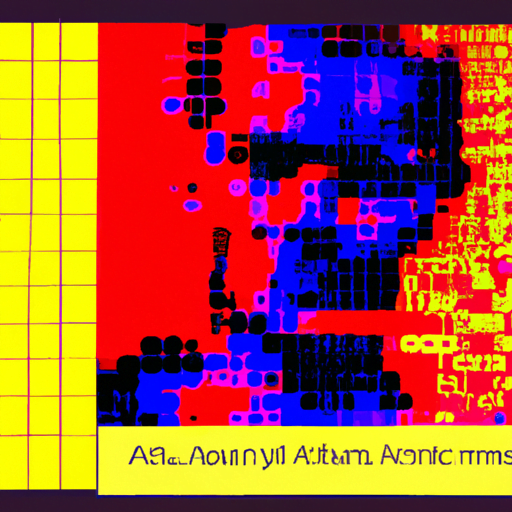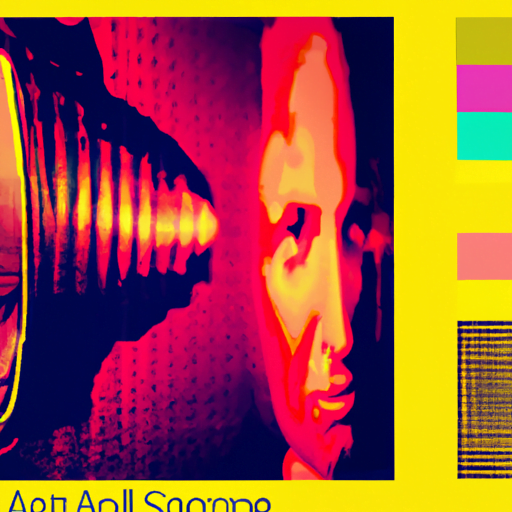
-
Table of Contents
AI and Music Album Art: Visualizing Sound with Code

Music and visual art have always had a close relationship, with album covers serving as a visual representation of the music contained within. In recent years, artificial intelligence (AI) has emerged as a powerful tool for creating and enhancing album art, allowing artists to visualize sound in new and innovative ways. This article explores the intersection of AI and music album art, showcasing how code can be used to create compelling visuals that capture the essence of a musical composition.
The Power of Album Art
Album art has long been recognized as an important element of the music industry. It serves as a visual representation of the music and can greatly influence a listener’s perception and interpretation of the songs. From the iconic cover of The Beatles’ “Sgt. Pepper’s Lonely Hearts Club Band” to the minimalist design of Joy Division’s “Unknown Pleasures,” album art has the power to evoke emotions, create a sense of identity, and even become a cultural symbol.
Traditionally, album art has been created by visual artists who collaborate with musicians to visually interpret their music. However, with the advent of AI, musicians and artists now have the ability to generate album art using code and machine learning algorithms.
AI and Generative Art
Generative art is a form of art that is created using algorithms and rules rather than traditional artistic techniques. It involves using code to generate images, animations, and other visual forms. AI has revolutionized generative art by enabling artists to create complex and dynamic visuals that respond to various inputs, including music.
One example of AI-generated album art is the work of artist and programmer Mario Klingemann. Klingemann uses deep learning algorithms to analyze music and generate visuals that are synchronized with the audio. His project “Neurography” creates abstract images that capture the rhythm, melody, and mood of a song. The resulting visuals are unique to each track, providing a visual representation of the music that goes beyond traditional album art.
Case Study: Taryn Southern’s “I AM AI”
Taryn Southern, a musician and filmmaker, collaborated with AI to create her album “I AM AI.” Southern used AI tools to compose the music, write the lyrics, and even generate the album art. The AI algorithms analyzed her voice and musical style to create original compositions, which she then curated and refined.
For the album art, Southern worked with artist and programmer Ross Goodwin, who used AI to generate visuals that represented the essence of each song. Goodwin trained a deep learning model on a dataset of album covers and then used it to generate unique visuals for each track. The resulting album art is a collection of vibrant and abstract images that reflect the emotions and themes of the music.
Enhancing Traditional Album Art
AI can also be used to enhance traditional album art by providing new tools and techniques for visual artists. For example, the artist and designer David McLeod used AI to create the cover art for the album “The Slow Rush” by Tame Impala. McLeod used a combination of AI algorithms and traditional design techniques to create a dynamic and visually striking cover that captures the psychedelic and dreamlike nature of the music.
AI can also assist in the creation of album art by automating repetitive tasks and providing inspiration. For instance, AI algorithms can analyze a musician’s lyrics or musical style and generate a range of visual concepts that can be further refined by the artist. This allows artists to explore different visual directions quickly and efficiently, saving time and providing new creative possibilities.
The Future of AI and Music Album Art
The use of AI in music album art is still in its early stages, but the potential for innovation and creativity is vast. As AI algorithms become more sophisticated and accessible, artists will have even more tools at their disposal to create visually stunning and conceptually rich album art.
AI-generated album art has the potential to revolutionize the way we experience and interact with music. By visualizing sound with code, artists can create immersive and interactive experiences that go beyond traditional album covers. Imagine being able to explore a visual representation of a song in virtual reality or having album art that changes dynamically based on the listener’s mood or environment.
Key Takeaways
- AI allows artists to generate album art using code and machine learning algorithms.
- Generative art, created using algorithms and rules, can capture the essence of a musical composition.
- AI-generated album art can be unique to each track, providing a visual representation of the music that goes beyond traditional album art.
- AI can enhance traditional album art by providing new tools and techniques for visual artists.
- The future of AI and music album art holds immense potential for innovation and creativity.
Conclusion
AI and music album art are a perfect match, allowing artists to visualize sound in new and exciting ways. From AI-generated visuals that capture the essence of a song to the automation of repetitive tasks for visual artists, AI is revolutionizing the creation and experience of album art. As AI algorithms continue to advance, we can expect even more groundbreaking and immersive album art experiences that push the boundaries of creativity and technology.
